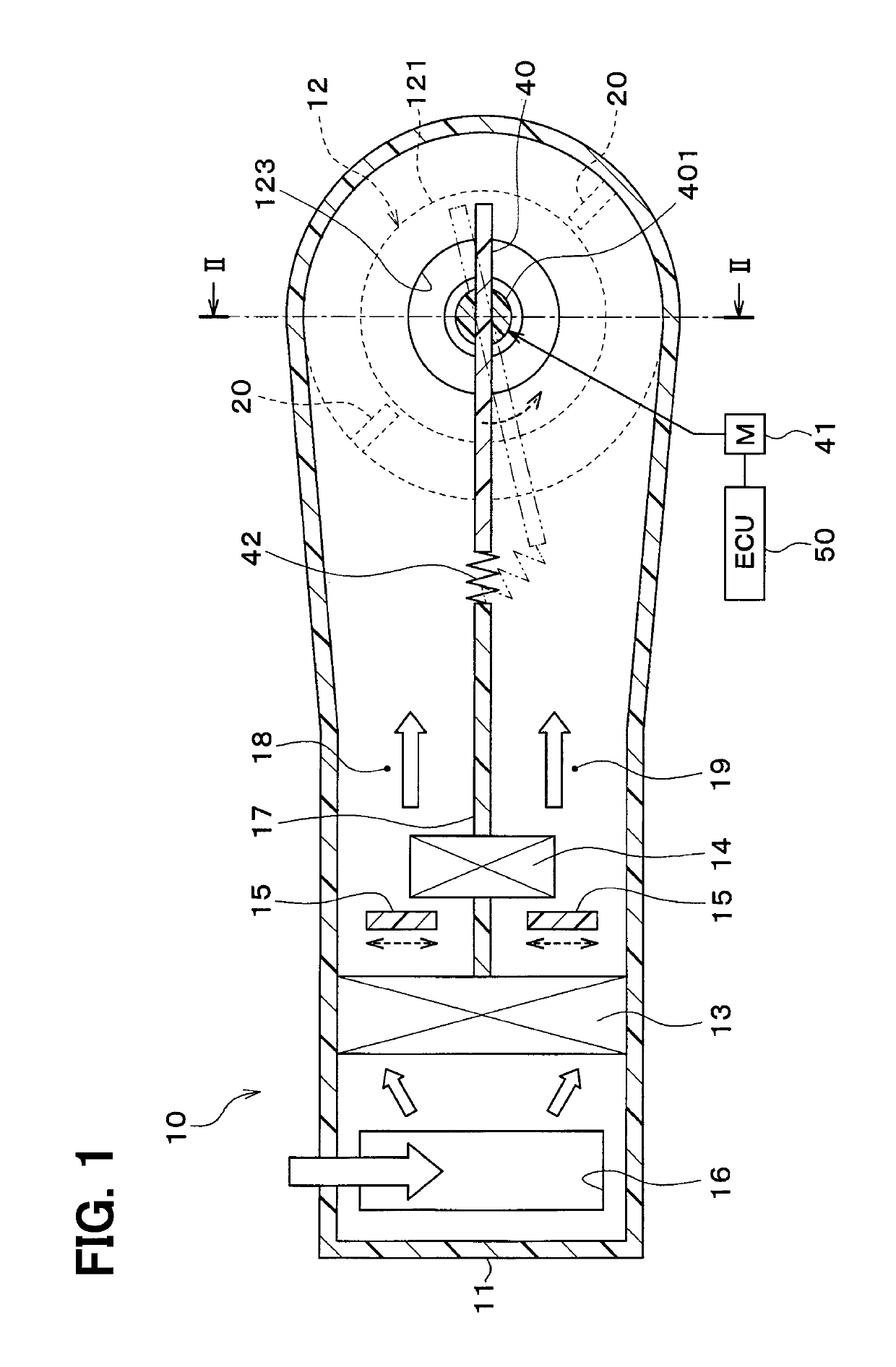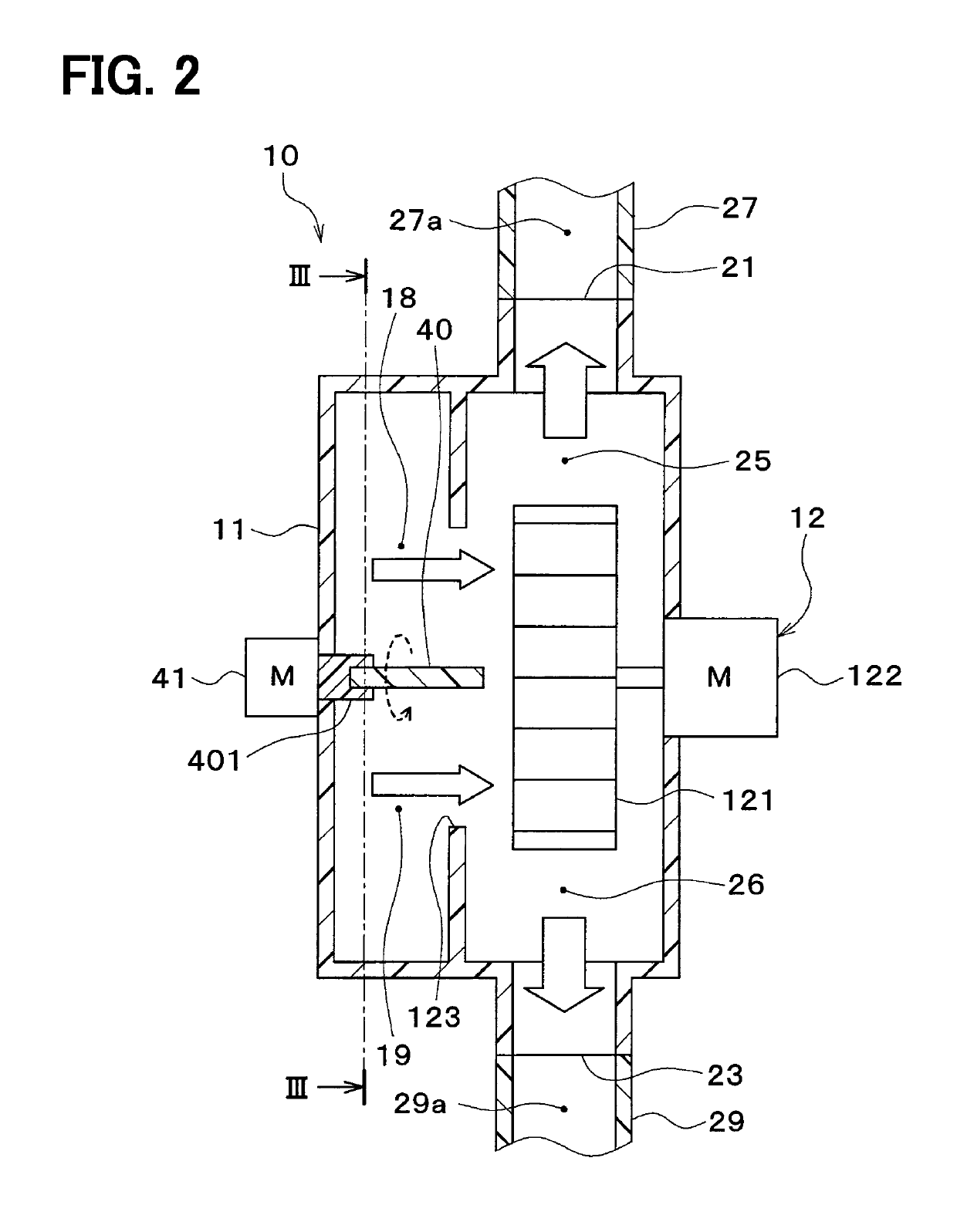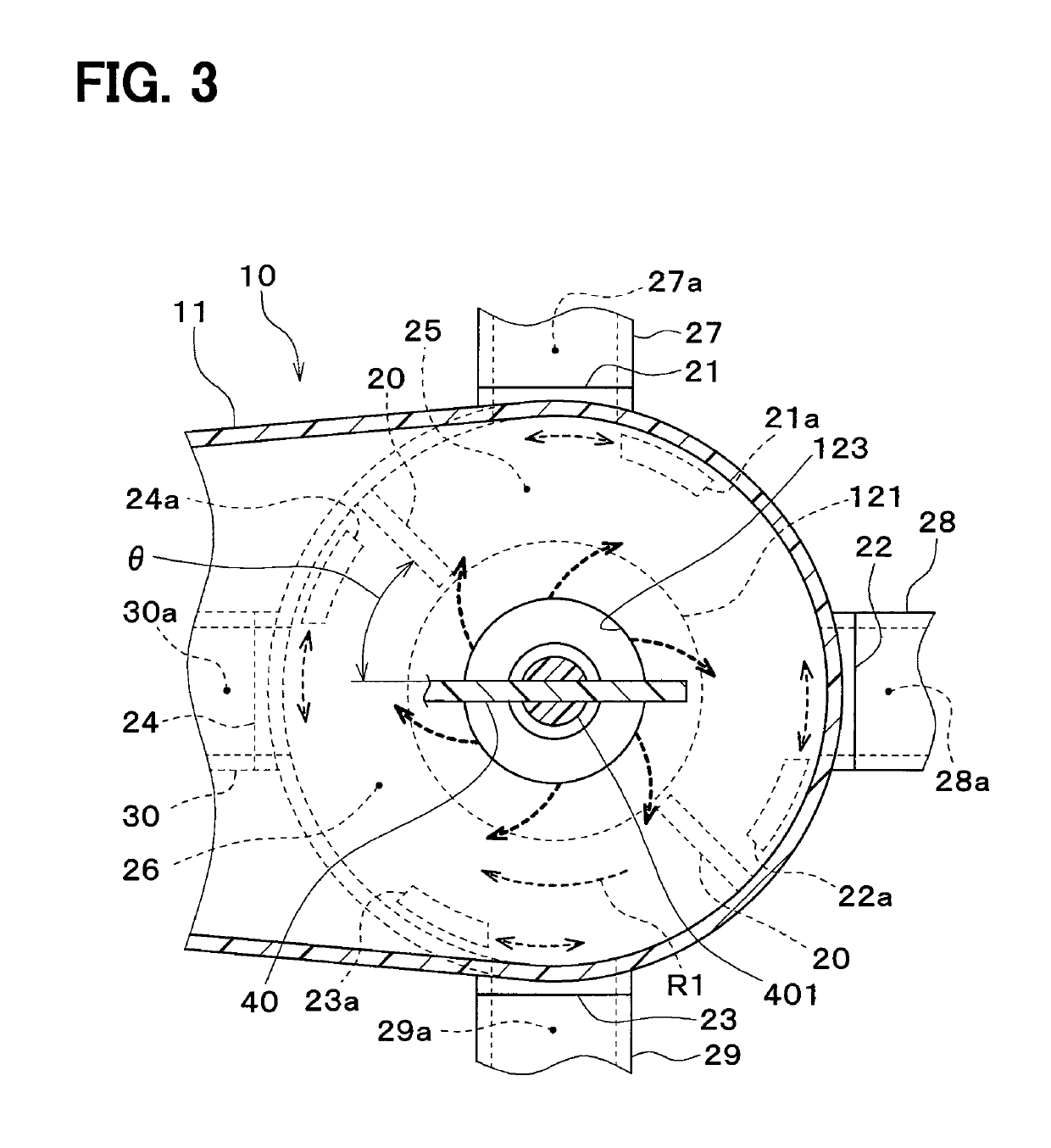Air conditioning device
a technology of air conditioning device and air flow, which is applied in the direction of lighting and heating apparatus, heating types, transportation and packaging, etc., can solve the problems of increasing the pressure loss of air flow in the casing and the blowing duct, and achieve the effect of reducing the pressure loss of air flow
- Summary
- Abstract
- Description
- Claims
- Application Information
AI Technical Summary
Benefits of technology
Problems solved by technology
Method used
Image
Examples
first embodiment
[0059]Subsequently, a detailed configuration of a vehicle air conditioning device 1 according to the present embodiment will be described with reference to FIGS. 1 to 4. As illustrated in FIG. 1, the vehicle air conditioning device 1 includes an interior air conditioning unit 10. The interior air conditioning unit 10 has a function of adjusting a temperature of a blown air and blowing the air into a vehicle interior (space to be air-conditioned).
[0060]The interior air conditioning unit 10 is disposed inside of a dashboard panel (instrument panel) on a foremost portion of the vehicle interior. The interior air conditioning unit 10 includes a casing 11, a blower 12, an evaporator 13, a heater core 14, and air mix doors 15.
[0061]The casing 11 forms an outer shell of the interior air conditioning unit 10. The blower 12, the evaporator 13, the heater core 14, and the air mix doors 15 are housed in the casing 11.
[0062]The casing 11 defines an air passage of the blown air which is blown in...
second embodiment
[0117]In the above embodiment, the position of each blowing side partitioning member 20 is fixed, and the position of each suction side partitioning member 40 is changed. On the other hand, in the present embodiment, as illustrated in FIG. 5, contrary to the above embodiment, a position of each suction side partitioning member 40 is fixed, and a position of each blowing side partitioning member 20 is changed.
[0118]The blowing side partitioning members 20 are driven in a circumferential direction of a blower fan 121 by an electric actuator (not illustrated). The operation of the electric actuator for the blowing side partitioning members 20 is controlled according to a control signal output from an air-conditioning control device 50.
[0119]The air-conditioning control device 50 controls the electric actuator for the blowing side partitioning members 20 according to a pressure loss of an overall air passage in an air conditioning device. Specifically, the air-conditioning control devic...
third embodiment
[0121]In the above embodiments, the air mix doors 15 and the suction side partitioning members 40 are provided, separately. On the other hand, in the present embodiment, as illustrated in FIGS. 6 to 8, each air mix door 15 is disposed integrally with a corresponding suction side partitioning member 40.
[0122]As illustrated in FIGS. 6 and 7, in the present embodiment, a casing 11 is formed into a cylindrical shape. An inside air inlet port 16a and an outside air inlet port 16b are defined in an outermost periphery of the casing 11. Opening areas of the inside air inlet port and the outside air inlet port are continuously adjusted by an inside and outside air switching door 16c.
[0123]An evaporator 13 is cylindrically disposed inside of the casing 11. A heater core 14 is cylindrically disposed inside of the evaporator 13 in the interior of the casing 11. The evaporator 13 and the heater core 14 are disposed coaxially with the casing 11.
[0124]The suction side partitioning members 40 are...
PUM
 Login to View More
Login to View More Abstract
Description
Claims
Application Information
 Login to View More
Login to View More - R&D
- Intellectual Property
- Life Sciences
- Materials
- Tech Scout
- Unparalleled Data Quality
- Higher Quality Content
- 60% Fewer Hallucinations
Browse by: Latest US Patents, China's latest patents, Technical Efficacy Thesaurus, Application Domain, Technology Topic, Popular Technical Reports.
© 2025 PatSnap. All rights reserved.Legal|Privacy policy|Modern Slavery Act Transparency Statement|Sitemap|About US| Contact US: help@patsnap.com



